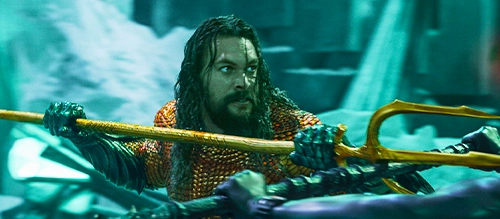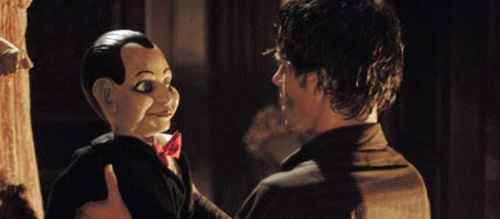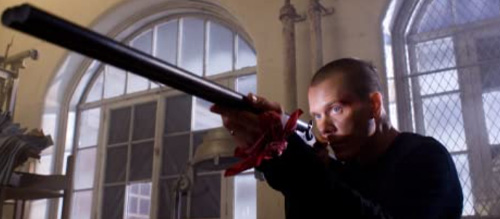James Wan Movies Ranked
When upcoming generations look back at the decade-defining horror hits of their youth, the films that will come to mind are Saw (2004), Insidious (2010), and the ever-expanding Conjuring universe. All of these contemporary staples were made at the hands of acclaimed director James Wan.
Born in Malaysia in 1977, James Wan was raised in Australia and shot to prominence when his theatrical debut Saw (adapted from his own short film) earned more than eighty six times its $1.2million budget during its theatrical run, birthing a franchise of sequels and spin-offs that has since earned $1billion in box office receipts.
The screenwriter, director and producer has been able to expand his portfolio of successful work across a range of projects, from horror to blockbuster cinema and back again, as he has stepped into multi-billion-dollar franchises like Fast and Furious and the DCEU whilst remaining committed to making original horror films such as Malignant.
The greats of horror that will never be forgotten include George A. Romero and Dario Argento, but James Wan is a filmmaker who may one day be regarded with such high acclaim. In this edition of Ranked, we at The Film Magazine are looking back over James Wan’s feature directorial filmography to compare and contrast this important filmmaker’s work, deciding which films are the best and worst in terms of artistry, creativity, social relevance, audience perception and critical reception. These are the James Wan Movies Ranked.
Follow @thefilmagazine on Twitter.
11. Aquaman and the Lost Kingdom

Basking in the spectacle and letting oneself simply enjoy the big screen was what made James Wan’s Aquaman the entertaining popcorn movie that it was. The same thing cannot be said for its lacklustre sequel.
Jason Momoa’s portrayal of the titular heroic merman remains charming and quick-witted, but the film suffers from a continuous barrage of meaningless jokes that never land, which only serves to highlight the underdeveloped script. More than this, Aquaman 2 primarily falters within the decisions that it does not make.
Wan, alongside the elaborate and talented team of visual effects artists, could have lent into a Lovecraftian aesthetic to dig deep into the lore of Aquaman’s oceanic world and create a majestically dark and enthralling atmosphere where the fantastical narrative would have thrived. Second to this is the lack of excitement and liveliness throughout the entire film, with the central storyline coming off as rather stale despite the incredible talents that Momoa, Yahya Abdul-Mateen II and Patrick Wilson possess. Evidently, Aquaman and the Lost Kingdom is an ocean apart from what it could have been.
10. Dead Silence (2007)

James Wan and his collaborative partner, Leigh Whannell (The Invisible Man), were met with immense praise upon the release of their breakout film Saw (2004). As with any rising stars, studios were practically begging them to churn out another hit. Eventually, the pair came up with a possessed doll story similar to the likes of Child’s Play (1988), but with a much more sinister tone.
Dead Silence is at its best a quick thrill that relishes in quiet, tense scenes of anticipation before releasing an almighty loud jump scare, naturally instigating a brief moment of shock before repeating the process until the effect wears off.
The critical reception of Dead Silence is a testament towards the rather lacklustre horror movie, which even Wan and Whannell have even admitted to being a “hellish experience”. In Whannell’s now-deleted blog post, he reportedly discussed how the film was a means to get their foot in the door and create enough buzz and profit to make the cinema that they intended to make in the first place.
Dead Silence is a familiar film. It feels as if it is a recycled display of gimmick frights. However, it can also be said that without this haunted doll movie, Wan may not have had the exposure to progress, resulting in some of his greatest works not being made.
9. Death Sentence (2007)

Death Sentence is a film that is still relatively unknown to the masses, despite the likes of Kevin Bacon, Garrett Hedlund and John Goodman starring in this redemption meets revenge action thriller.
The mid-2000s were a time when full throttle, heavy handed action cinema thrived, riding the waves of the fast-paced classics of the era such as The Bourne Identity (2002) and the Mission: Impossible series (1996-present). Wan amalgamated Death Sentence’s adrenaline-pumping visual feasts with a cryptic storyline that wove its vengeful web across the entire film to deliver one of the most forgotten entries of his directorial career.
Death Sentence is based on Brian Garfield’s 1975 novel of the same name, which is a sequel to his best selling novel, “Death Wish” (1972) – also cinematically adapted by Michael Winner in 1974. Garfield was originally disappointed in the cinematic takes on his literature, but finally saw a beacon of hope when Wan pitched his enigmatic take for “Death Sentence”.
The lengthy history of Death Sentence speaks to the film’s extensive allegories. Akin to the source material, Wan manages to conduct a blood-soaked resilient story of retribution, without glorifying the twisted psyche of revenge itself. The film is also its own worst enemy; it can be jumbled and almost incoherent in its ramblings. These downfalls do provide a marker regarding Wan’s authorial style, which is great, but these tangled themes work in a deliberate sense in his more current output.
Recommended for you: John Carpenter Movies Ranked

